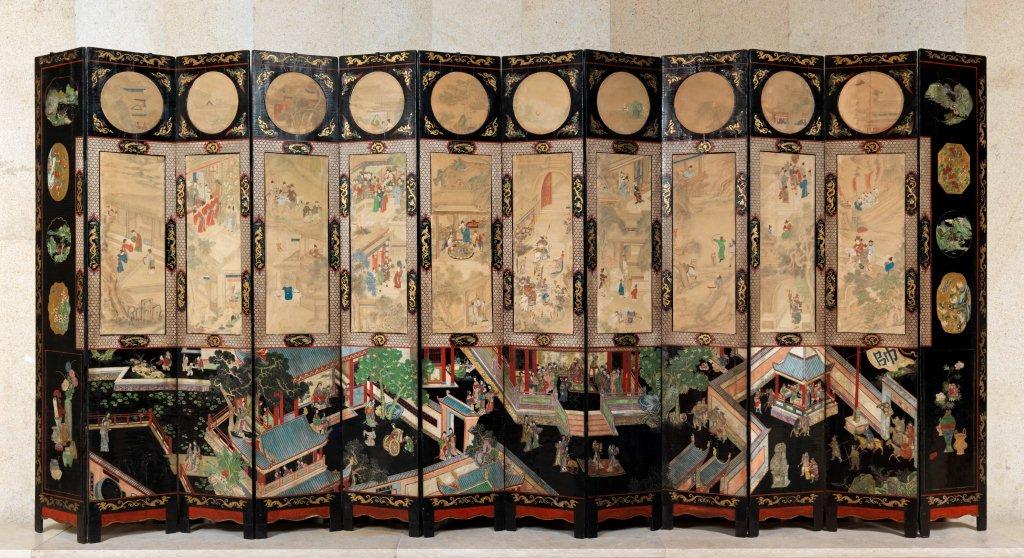
- China, late 17th century
- Western pine wood
- Inv. 1023
‘Coromandel’ screen
Apparently used as a sumptuous gift for a local high dignitary – a ‘marshal’ or general, perhaps – on the occasion of his 50th birthday (as revealed by an inscription, but not the illegible one on the back, that seems to have been ‘artistically’ retouched on a later period), and not for export, as it happened so often with pieces depicting both oriental and western figures, the screen consists of twelve wooden panels (of western pine) linked by wooden hinges. The entire structure has been covered with a coat of clay powder, protected with textile fibres added to create a base for the numerous coats of lacquer. Once the lacquer had dried thoroughly, it was incised according to previously marked out drawings and the resulting spaces were filled with brightly coloured pigments (red, yellow, turquoise, blue, etc…) before being finally polished.
This highly unusual screen has been decorated with paintings on paper, a rare feature. Apart from the two end panels, all the others have two frames – a rectangular one in the centre and a circular one at the top – where paintings based on Chinese legends and folk tales have been inserted. The border around the rectangular panels consists of geometrical bean-shaped motifs intercalated with entwined mythological animals such as dragons and phoenixes.
The lower section of the ten central panels shows a senior dignitary – the presumed ‘marshal’ or general, revealed by the two characters on the flag at the palace entrance – sitting in one of the pavilions of his presumable palace and observing a dance performance, while the other areas show scenes of everyday life and others related to the very celebration of his birthday, such as the arrival of important guests (on the right); games and sporting events – including bow and arrow shooting – and one particular scene depicting a young infant on a carpet, surrounded by toys that will dictate (as was the Chinese belief) his future: since the boy seems to prefer the weapon, that would reveal that he’d become a soldier, like is presumed father (or grand-father), the man being celebrated.
Other scenes represent what may have been the servants, getting busy for the celebrations, and a considerable variety of species of trees and flowers set inside a range of frames. These species were a typical feature of Chinese iconography and have great allegorical meaning. For example: the pine-tree and the bamboo – respectively symbols of wisdom and love – are reproduced alongside peonies and magnolias, symbols of female beauty and winter/spring.
Acquired by Calouste Gulbenkian from J. Duveen, London, December 1920.
H. 283.5; W. 618; D. 2.5 cm